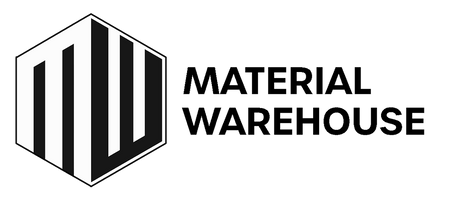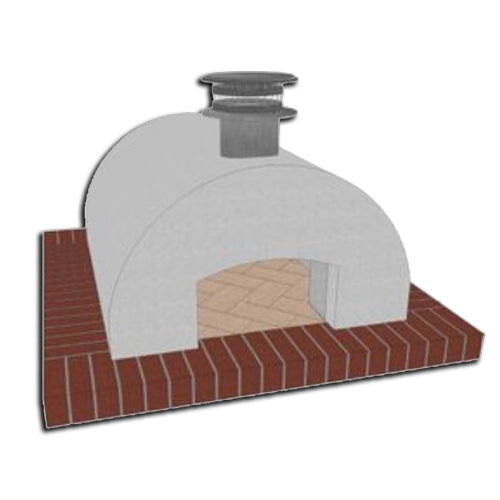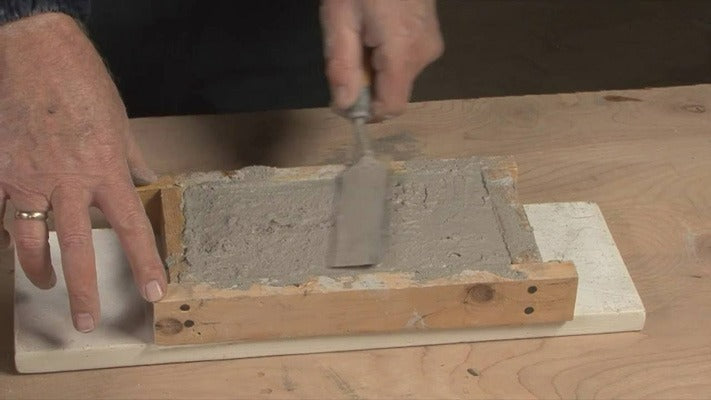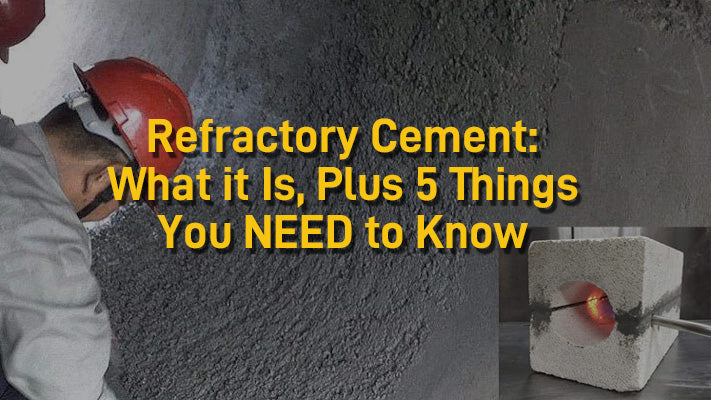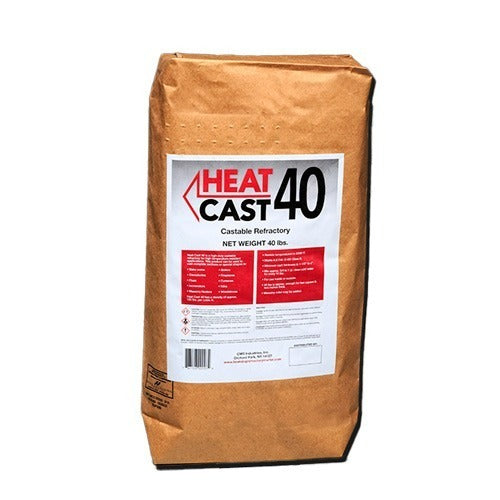
Castable Refractory Cement Heat Cast 40
Heat Cast 40 is the ideal castable refractory cement solution for high-heat applications. This product can be molded into the custom shape needed for boilers, furnaces, woodstoves, fireplace hearths, forges, and other high-temperature applications.
The refractory cement mortar is poured into a form to create your bricks.
The 40-pound bag of dry mix will cover approximately 2 square feet at two inches thick. Depending on the situation, it can be cast or toweled in place. Heat Cast 40 should be cast no thinner than 1.5" thick to maintain integrity.
FIND OUR FULL PRODUCT LINE OF REFRACTORY PRODUCTS HERE>
For estimating purposes, a 40 lb bag covers approximately two square feet at 2 inches thick.
This product meets ASTM C-401 Class B. It's also non-water-soluble while in service.
As a castable refractory product, it handles exceptionally high temperatures in excess of 2,000 degrees.
Typical applications for Heat Cast 40: Firebox slabs, Custom Firebricks, Pizza ovens, Forges, Furnaces, and Crematoriums
Looking for a quote for your project? (800) 567-5358
Project Quote Form Here>
Heat Cast 40 lb. Bags are sold individually; a full pallet is 64 bags
